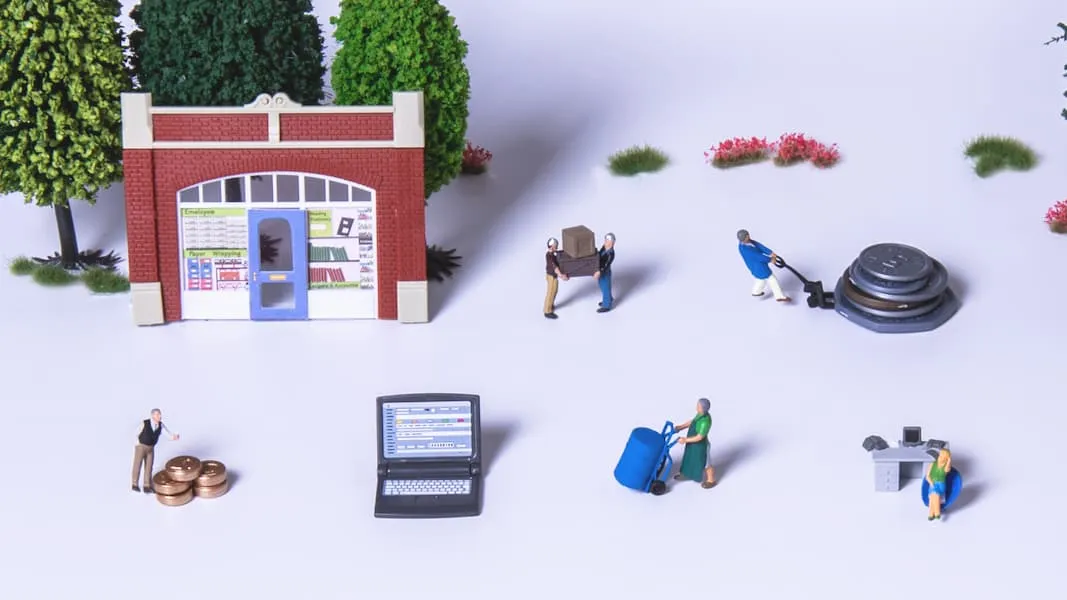Productivity hacks: how to create an office that works for you
5
min read
Productivity hacks: how to create an office that works for you





It’s clear that a motivated workforce is vital to the success of companies large and small. Yet in the digital age, there’s a tendency to turn to technology for solutions, especially with regards to productivity. But while digital tech can, and should, be used to enhance work, it can also leave employees feeling undervalued.
The 2018 Global Culture Report found that only 16% of employees feel “connected and engaged” with employers. Sure, communication is just a click away, but clicks aren’t enough to address rampant workplace apathy, which can lead to anxiety and depression.
The Centre for Mental Health found that UK employers lose as much as £34.9 billion each year to reduced productivity, sickness absence, and staff turnover all stemming from mental ill health. So, what can we do to create work experiences that inspire employees’ very human, innovative tendencies?
Build it, and they will come
Simon Jordan, co-founder of Jump Studios, the architecture and design collective behind Google’s London Campus, thinks that good workspace composition is about “removing daily frictions” – the things that get in the way of work. Employers should, therefore, look to alleviate undue pressure from employees by offering amenities, such as refreshments, gyms, and music rooms, or services, like dry cleaning and child-care.
Where and when people work is also changing. “Think about what constitutes the workplace,” says Jordan. “It’s all those places where people might be conducting work. It could be public transport, or a cafe. That means the office has to work much harder.”
Human interaction and collaboration often inspire our best ideas, and bringing employees together helps form work culture. But, according to Jordan, the traditional typology of the workspace – the image that comes to mind when you hear the word “workspace” – is being shattered to allow room for an increasingly versatile space to accommodate different experiences for different people.
“There’s beginning to be some awareness that the workplace needs to give due consideration to people’s emotional and mental wellbeing,” says Jordan. “Whatever the building is or does, it needs to support and leverage the potential of that human capital.”

A people first approach
The International WELL Building Institute (IWBI), an organisation dedicated to the creation of buildings that support the wellbeing of the people who use them, has identified ten key components of good workspace design: air, water, nourishment, light, movement, thermal comfort, sound, materials, mind, and community.
“Every one of these has a way of addressing mental health, physical health, and cognitive health,” says Ann Marie Aguilar, IWBI’s director of operations, Europe. “There’s an opportunity here to maximise what goes on in these buildings if the people who occupy them are operating at their best – they’re healthy, they’re physically fit, they’re eating really good quality food.”
That sounds self-explanatory, but we humans are complex beings. For example, some people prefer to work at a standing desk, and others prefer sitting. Some prefer a warm office, and others prefer a cold office. According to Aguilar, buildings should meet the diverse needs of the people using them.
“One thing you’ll start to see more of in the workspace is that it’s all about choice,” she says. “If people aren’t comfortable, that’s when productivity really hits. The ability to work within your own environment is fabulous in terms of long-term productivity and retention at work. If you want to work in a busy and buzzy environment, you’ll be in one area, but if you want to put your head down and work in a quiet environment, then you’ll work in another area.”
Potted plant power
According to Aguilar, incorporating nature into the work environment is far more than a cosmetic decision. “Anything you can do to connect human beings to nature has an immediate effect on mental stress and stress levels in general,” she says.
Leni Zneimer, vice president of community for WeWork, agrees, pointing out that the benefits of plants go beyond their calming effects.
“‘Bringing the outdoors in’ is more than just an aesthetic trend for the workplace,” she says. “Whether we’re making decisions based on their environmental impact, or using our influence to ensure sustainability from our suppliers, our members know we are committed to sustainability.”
The people behind productivity
Finding those connections to the environment, to people, and to your work shouldn’t be a daily hunt. “People want more from their offices,” says Zneimer. “They have high expectations in terms of the quality and design; and they want a community that supports them in their growth.”
When creating this big picture work culture, according to Zneimer, the devil’s in the details.
“Every piece of furniture, ornament and even lighting is specifically placed to provide the best working environment,” she says. “In Paris, our interior designers decided not to place power sockets in a certain area, as they wanted that place to be used as a sanctuary and to take in the view of the city, not become trafficked by laptop work.”
Tips for creating a productive workspace
While there isn’t a recipe book for creating the perfect workspace, the guidelines are clear; pay attention to the people, and productivity will follow. Here’s how:
- Technology isn’t necessarily the answer
- A workspace doesn’t need to look like a workspace
- Give employees more control over their work environment
- Plants do wonders for staff mood and productivity
- Little details like ornaments and lighting go a long way in bringing people together


How to use payroll loans for small businesses

Business Loans comparison: High Street Banks vs. Alternative Lenders
Comparing the pros and cons of getting a business loan from traditional lenders and alternative finance providers, including how they differ in application processes, speed of funding, rates and flexibility.

Working capital ratio
Discussing the importance of calculating your company’s working capital ratio, what it represents and how to improve the ratio.








